Sealife guideThe marine tunicates
The phylum of marine tunicates, also known as urochordates, is a group of marine invertebrate animals characterized by the presence of a gelatinous covering called a tunic, which surrounds and protects their body. It includes more than 1,300 species grouped into a single class called Ascidiacea. Marine tunicates play a vital role in marine ecosystems, both as filter feeders and as an integral part of marine food chains.
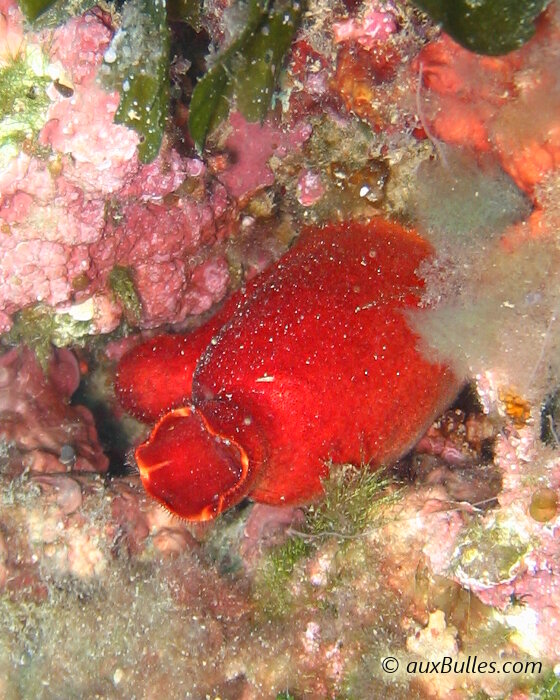
Tunicates with a characteristic representative, the red sea-squirt, inflated like a balloon
Tunicates inhabit a wide variety of marine environments, from shallow coastal waters to the abyssal depths. They are found in two forms: ascidians, which are fixed to substrates, and salps, which are free-swimming and part of the plankton.
Description
Tunicates have a unique morphology with a body protected by a gelatinous tunic that gives the phylum its name. This tunic is composed of cellulose, a substance rare in the animal kingdom. The body structure of tunicates generally includes two openings called siphons: an inhalant siphon through which water enters the body and an exhalant siphon through which filtered water is expelled.
Diet
This ability to actively filter seawater allows them to feed by extracting organic particles and microorganisms.
Reproduction
Tunicates can reproduce sexually and asexually. Sexual reproduction typically occurs through internal fertilization, although some species may release their gametes into the water for external fertilization.
Additionally, many species of tunicates can reproduce by budding, where a fragment of the animal detaches and forms a new individual, ensuring rapid multiplication.
Habitat
The tunicate phylum includes a diversity of species, each with unique morphological and behavioral adaptations to survive in different types of marine habitats.
Ascidians are often seen attached to rocks, shells, or even other marine animals. In contrast, salps, more mobile, move through the water column and form interconnected chains that can travel long distances. These variations allow tunicates to inhabit various marine environments, contributing to their wide geographic distribution.
Did you know ?
Tunicates play a fundamental role in marine ecosystems as filter feeders. Their ability to filter water helps maintain the balance of planktonic communities and reduce excess particles and nutrients in the water. Fixed ascidians, for example, are key elements in benthic habitats, providing shelters for many marine species. Additionally, tunicates are a food source for various predators, including certain fish, starfish, and sea turtles.
Some marine tunicates to discover
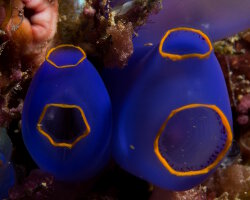
Blue tunicate
(Rhopalaea fusca)
(Rhopalaea fusca)
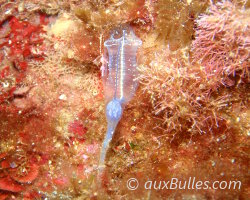
Bluestriped light bulb tunicate
(Clavelina dellavallei)
(Clavelina dellavallei)

Giant salp
(Salpa maxima)
(Salpa maxima)

Glassy tunicate
(Ascidia paratropa)
(Ascidia paratropa)
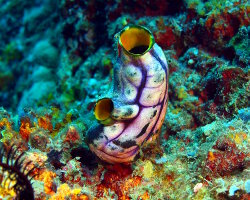
Ink spot sea squirt
(Polycarpa aurata)
(Polycarpa aurata)
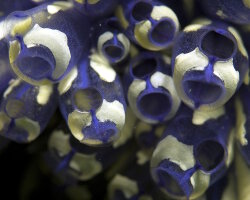
Painted tunicate
(Clavelina picta)
(Clavelina picta)
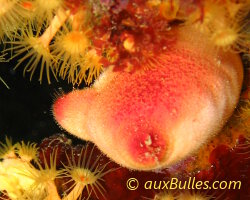
Red sea-squirt
(Halocynthia papillosa)
(Halocynthia papillosa)
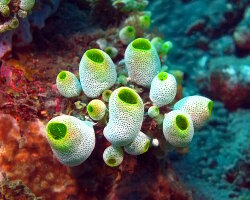
Tall urn ascidian
(Didemnum molle)
(Didemnum molle)
Our latestUpdates
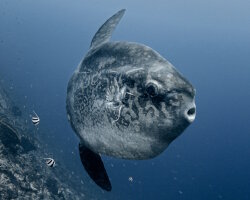
Friday, September 5th 2025
The bump-head sunfish
Learn about the bump-head sunfish (Mola alexandrini), the world's heaviest bony fish, its habitat in tropical and temperate oceans, diet of jellyfish, deep-water behavior and record size over 6,000 lbs.
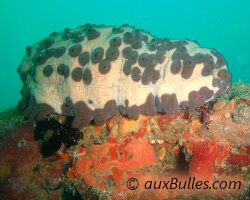
Wednesday, September 3rd 2025
The chocolate chip sea cucumber
The chocolate chip sea cucumber has a massive cylindrical body that is beige in color, covered with a set of dark brown pustules resembling chocolate chips that protrude slightly from the surface, giving it a resemblance to a cookie, hence its french name. It can reach a length of about 12 inches when fully grown.
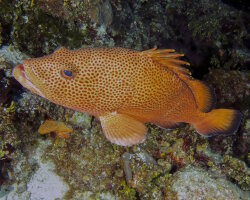
Monday, September 1st 2025
The red hind grouper
The red hind grouper has a distinctive appearance, usually beige to brown in color, with numerous red or brown spots covering its entire body and the base of its fins. It is often found in the shallow waters of coral reefs and rocky areas, where it hides in crevices and cavities.
Photo of the Day
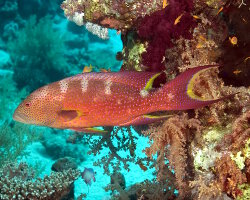
Mérou croissant de lune
(Variola louti)
(Variola louti)
